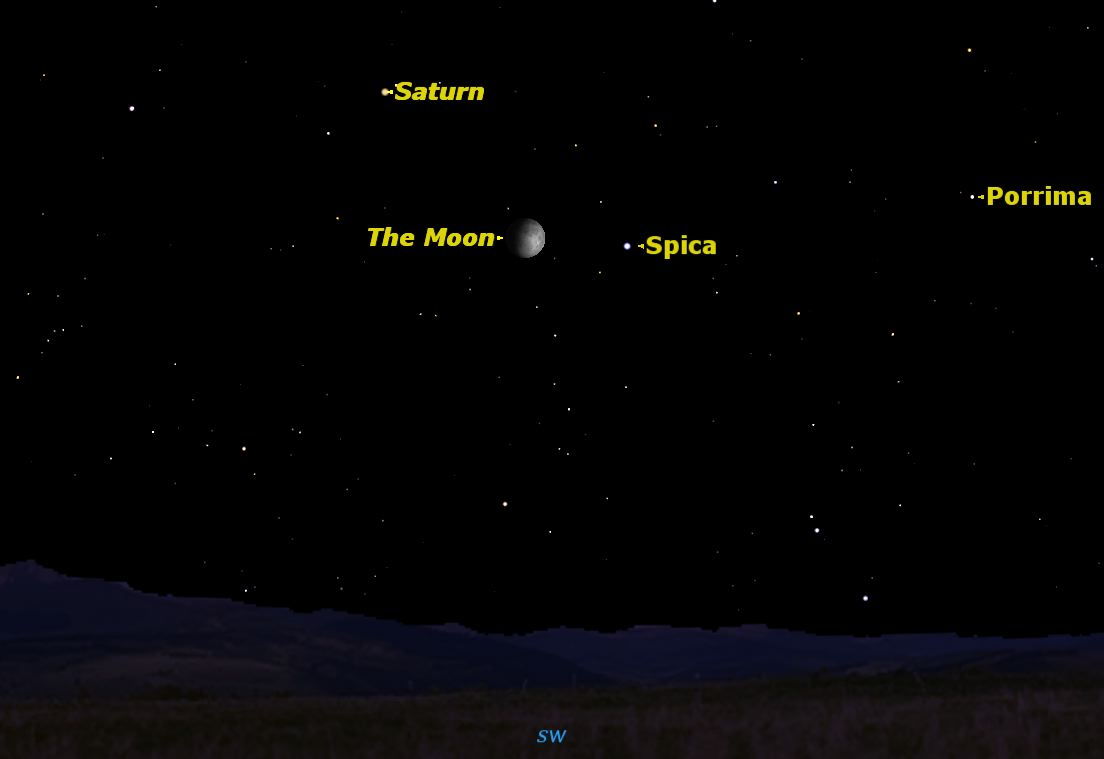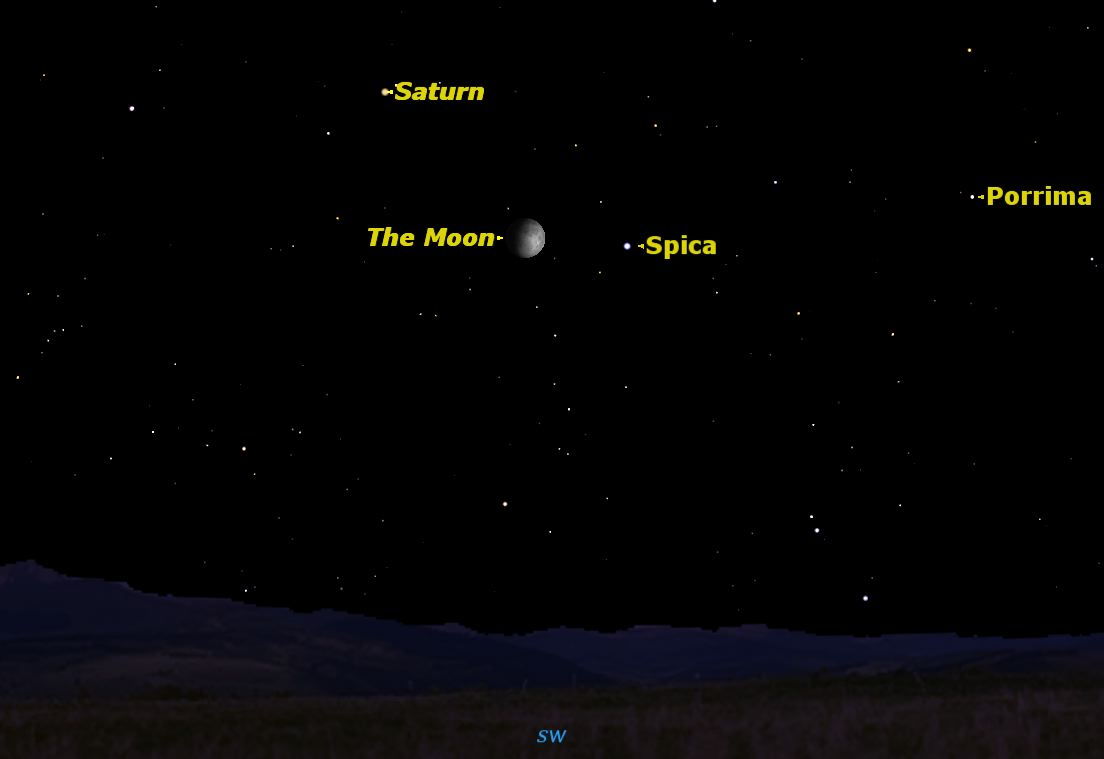Trifecta of Celestial Wonders Shines in This Week's Night Sky

Saturn and the bright star Spica have been making a pretty pair in our evening skies recently. This week they will be joined by the waxing gibbous moon, making a perfect threesome.
Next Monday evening, June 17, the moon will be nine days old and just to the right of Spica. On Tuesday evening, it will have moved to a position between the two, as shown in the graphic above. By Wednesday night (June 19) it will be off to Saturn's left, 11 days old.
To skywatchers without a telescope, watching the moon move past Spica and Saturn over three successive nights will bring a vivid demonstration of how rapidly our moon circles the Earth. [June 2013 Night Sky Maps]
If you own a telescope, there is much to be revealed. On the moon, the rising sun illuminates the craters Plato (in the north), Copernicus (in the center), and Tycho and Clavius (in the south). Clavius is one of the largest craters on the surface of the moon, and it's always a challenge to observers to see how many "craterlets" (mini craters) they can count within its walls.
Moving your telescope onto Saturn, you are always guaranteed a treat with its tiny perfect rings. But if you look on Tuesday night, look beyond the rings to Saturn's moons, several of which are readily visible in small telescopes.
Saturn's brightest moon Titan, the only moon in the solar system large enough to have a substantial atmosphere, can be seen in any telescope. On Tuesday night it will be at its maximum elongation eastward from the planet. Between Titan and the rings, look for Tethys, visible in a small 90-mm telescope. South of Saturn is Rhea, its second brightest moon. Dione is immediately north of Saturn.
The special treat tonight is located a bit farther north of Saturn beyond Dione: the planet's most unusual moon, Iapetus. As you can see in the graphic, the inner moons all move in orbits in the same plane as the rings, right above Saturn's equator.
Get the Space.com Newsletter
Breaking space news, the latest updates on rocket launches, skywatching events and more!

Iapetus, however, moves in a completely different orbit, tilted strongly with respect to Saturn's equator. This often takes Iapetus far from Saturn, but tonight it is passing just north of Saturn, and is much closer and easier to spot than usual. Iapetus is a bit fainter than the other moons, so may require a 150-mm telescope.
Stargazers can also look beyond the moon and Saturn for other telescopic treats in Virgo, such as the close double star Porrima (Gamma Virginis) to Spica's right. But viewing the countless galaxies in Virgo will have to wait a week until the moon gets out of this part of the sky.
This article was provided to SPACE.com by Starry Night Education, the leader in space science curriculum solutions. Follow Starry Night on Twitter @StarryNightEdu.
Join our Space Forums to keep talking space on the latest missions, night sky and more! And if you have a news tip, correction or comment, let us know at: community@space.com.

Geoff Gaherty was Space.com's Night Sky columnist and in partnership with Starry Night software and a dedicated amateur astronomer who sought to share the wonders of the night sky with the world. Based in Canada, Geoff studied mathematics and physics at McGill University and earned a Ph.D. in anthropology from the University of Toronto, all while pursuing a passion for the night sky and serving as an astronomy communicator. He credited a partial solar eclipse observed in 1946 (at age 5) and his 1957 sighting of the Comet Arend-Roland as a teenager for sparking his interest in amateur astronomy. In 2008, Geoff won the Chant Medal from the Royal Astronomical Society of Canada, an award given to a Canadian amateur astronomer in recognition of their lifetime achievements. Sadly, Geoff passed away July 7, 2016 due to complications from a kidney transplant, but his legacy continues at Starry Night.










